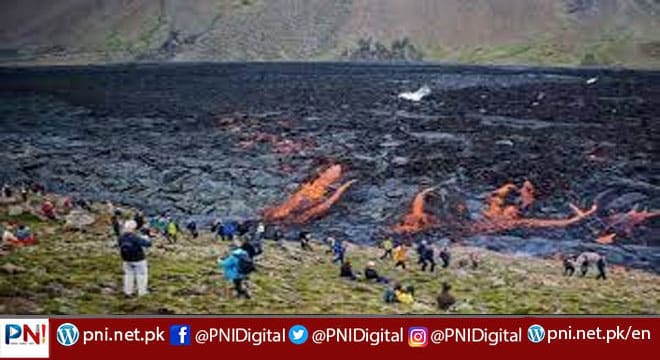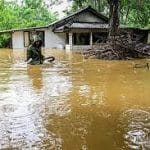Reykjavik, Nov 18 (AFP/APP):Iceland’s Fagradalsfjall volcano has not spewed lava since September 18, the day it became the country’s longest eruption in 50 years, but scientists say it’s too early to call the eruption over.
Lava began flowing out of a fissure in the ground on the evening of March 19 on the Reykjanes peninsula to the southwest of Reykjavik, a spectacle that quickly became a major tourist attraction.
Now, hardened black lava fields cover the landscape for almost five square kilometres (1.93 square miles), the occasional sulfurous plume of smoke rising up from cracks.
“It is possible that a point clogged enough to start to cool down, (so that) the new lava simply hasn’t managed to come out,” Sara Barsotti, volcanic hazards coordinator at the Icelandic Meteorological Office (IMO), told AFP.
“That’s often how eruptions end.”
For two months, seismographs have registered no tremors — the slight vibrations recorded before and during an eruption.
While there have been no lava spurts during that period, a plume of smoke is still rising from the main crater.
“It is just the remaining heat and the remaining gas in the magma underground,” geophysicist Pall Einarsson explained.
After spitting out magma measuring more than 1,200 degrees Celsius (2,192 Fahrenheit), “it takes a while for an erupting volcano to cool down before stopping gas exhalation and heat”.
The amount of sulphur dioxide released from the volcano remains low, at just a few kilos per second compared to several hundred at the peak, the IMO said.
– Visitor decline –
More than 340,000 curious onlookers have flocked to the site since March, though crowds have dwindled considerably in recent months.
The area is still seismically active and scientists are keeping a close eye on it.
Satellite and GPS data have measured a recent rise in the ground level in a large area of the Reykjanes peninsula, a so-called inflation or uplift, supporting the theory of volcanic reactivation in the region.
The ground rise, which began in mid-September, is considered relatively small by volcanologists, about two centimetres at its biggest point, according to the IMO.
“What we saw in Fagradalsfjall could just have been the first chapter of a long story. The story could have several more chapters but we really don’t know,” said Barsotti.
While it’s impossible to predict a volcanic eruption, Iceland’s scientific community would not be surprised to see a continuation of volcanic activity at Fagradalsfjall, or for a new fissure to open elsewhere on the peninsula.
Follow the PNI Facebook page for the latest news and updates.







